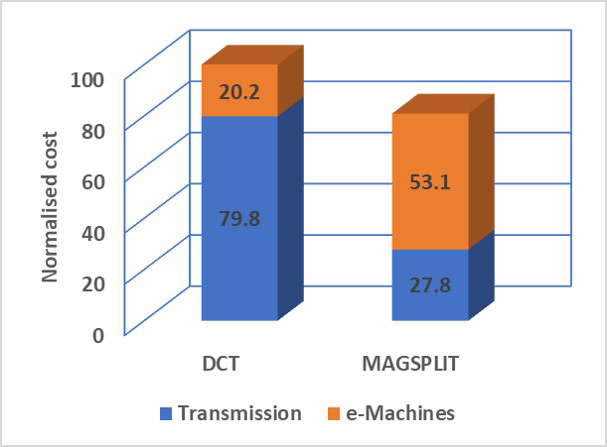Making the case for hybrids
Many governments are making bold claims about achieving zero emission automotive transport and banning sales of internal combustion engines (ICE) as early as 2040. In the UK recent reports suggest that the Government will seek to bring forward the current ban selling ICE in cars to 2035. Magnomatics investigate further.
The Committee on Climate Change, the UK Government’s independent advisory body, has already urged ministers to adopt an even earlier target of 2030. That demand was backed by more than 100 Tory MPs in September 2020 as part of a plan to ‘build back greener’ after the COVID-19 pandemic.
These statements are rightly very aspirational but are they likely to be delivered? Many industry insiders remain supportive in public, but sceptical in private. For smaller city cars there is little doubt that battery electric vehicles are coming and will be great. These vehicles are light, are not expected to sustain high-speed cruise and need relatively little range. They require only a small battery pack (around 50kWh), and are likely to achieve near parity with the cost of an ICE vehicle.
The forecast power density and cost of batteries supports the adoption of these vehicles in their own right, no doubt encouraged by zero-emission zones. However, if we turn to larger or higher performance cars the arguments start to change. Such vehicles require much larger battery packs and much more powerful charging points. These larger battery packs also mean the vehicles would remain much more expensive than ICE vehicles.
Therefore, the technical argument for a Plug-in Hybrid Electric Vehicle (PHEV) remains strong. They have reasonable zero emission range to meet the essential requirement of urban operation. And once outside a zero-emission zone, they can offer the same levels of performance as current ICE vehicles. However, perhaps more importantly they can achieve the same price point as ICE vehicles. The electricity generated by these ‘self-charging electric vehicles’ is achieved with similar CO2 emissions to the current UK grid. Vehicles use their internal combustion engines over a very narrow band of operation. This means that with proper engine design and calibration, emissions are close to zero.
The arguments become even more relevant for commercial vehicles and trucks. As weights and range increase so does the size, cost and mass of the battery pack. This increased mass is almost certainly going to result in reduced payload. Does it really make sense to carry around a heavy battery all of the time? Many point to the opportunity to ‘lightweight’ other aspects of the vehicle in order to offset the mass of the battery. Not only could this be expensive in terms of unit cost, it could equally be applied to current ICE vehicles and it would lead to reduction in emissions for those vehicles.
It is consequently not surprising to hear that many industry insiders still expect the ICE to play an important role well beyond 2035. It also seems likely that there will be a move to full lifecycle emissions rather than just tailpipe emissions. While the latter is critical for our health, the former is better to measure our impact on CO2 and global warming.
The latest study on the ‘CO2 lag’ of electric cars comes from the University of Liège in Belgium. Calculations by Professor Damien Ernst, originally commissioned by a TV show and reported by local newspaper HLN, are by far the most negative take on EVs yet.
Using the average CO2 output of the European electricity network, Ernst concluded that an electric car using a 60kWh battery made in Europe would have to travel some 700,000km (435,000 miles) before it is “greener than an average petrol car”. However, Ernst also says that a fully renewable European grid would reduce the EV’s CO2 lag to just 30,000km (18,640 miles).
Given these arguments it is perhaps not surprising that despite all of the political rhetoric most forecasts of automotive sales still show a large proportion of ICE sales.

The MAGSPLIT transmission
- The Toyota Hybrid System (THS) has proved the most successful in the world. One only has to step inside London’s congestion zone to see it has been enthusiastically adopted by taxi drivers who properly make their purchasing decisions based on economics
- The THS uses a Dedicated Hybrid Transmission (DHT) that integrates two electric motors with a mechanical planetary gear system. This is generally known as a power-split transmission
- Whilst mechanically simple, and therefore cheap, this configuration allows an enormous degree of freedom in terms of optimising the powertrain for the lowest emissions possible.
- Magnomatics’ MAGSPLIT’s hybrid system, a simple two-rotor DHT, can deliver significant efficiency gains, as shown by the fact that it is between three and five percent more fuel efficient than a power-split hybrid system based on a mechanical gearbox and permanent magnet motor/generator. It can also deliver 32% better fuel economy than a conventional gearbox.
- A further advantage of MAGSPLIT is its ability to filter torsional vibration from an internal combustion engine with no loss in efficiency. This makes it applicable to petrol and diesel engines.
- Generally, MAGSPLIT transmissions are more compact and can free up valuable packaging space in vehicles.
- Full transmission BOM costed by FEV (Europe) for high volume manufacture and when compared to ‘equivalent’ DCT costed using the same assumptions shows that:
o MAGSPLIT hybrid transmission cost is similar to non-hybridised DCT (1.3% greater).
o Cost is 19% lower than equivalent hybrid DCT










